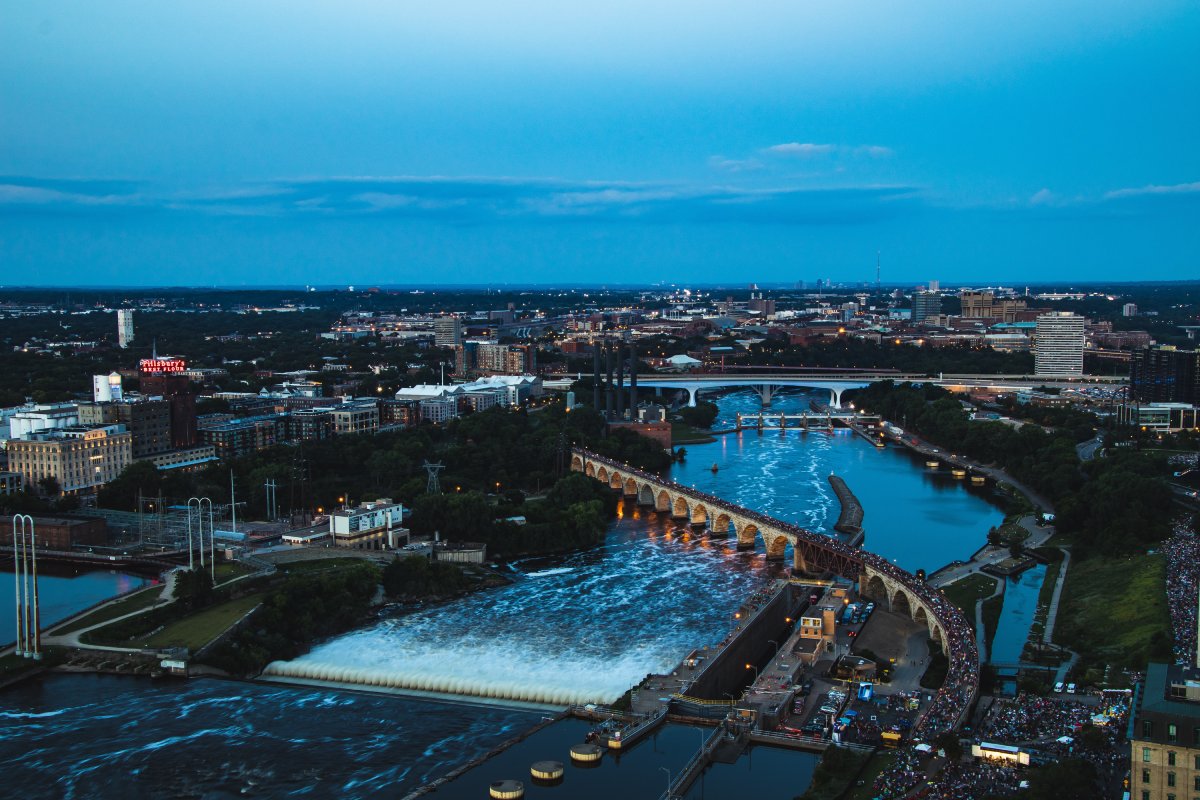Skift Take
Minneapolis has been working hard to convince its Minnesotans that it's come a long way from its darker days.
Minneapolis recently concluded an aggressive marketing push titled “See What All the Fuss Is About,” a spring tourism campaign meant to combat the online narrative that the city’s a ghost town and its best days are forever behind it.
“We wanted to take back that mic, ” said Courtney Ries, senior vice president of destination branding and strategy for Meet Minneapolis, the city’s destination marketing organization. “We didn’t want other people to be in charge of that narrative.”
The negative sentiment comes from all sides.
Many Minnesotans have a negative view about their state’s largest city. Social media and the comment section on Minneapolis-related articles in the Minnesota’s paper of record, Star Tribune, have carried a “I wouldn’t go there” sentiment, according to Ries.
Last fall, CNN published an investigative piece that noted rising crime and a feeling of “lawlessness.”
The $500,000 advertising campaign included TV, billboards, radio and influencer collaboration to play on the negative commentary. One billboard read “Empty, But Not Like Twitter Says” with empty cocktail glasses and another that says “”Deserted But Not Like You’ve Hear” with images of deserts.
“A lot of those people hadn’t gone and hadn’t seen it themselves,” said Ries. “They’re just relying on whatever type of media diet they’re enjoying and not seeing it for themselves.”
The City of Lakes isn’t the only city to combat its bad public look. San Francisco Travel last month launched a $6 million advertising campaign to remind tourists it’s still as fun as it was before the pandemic and not the decaying image prevalent in national news.
Like Portland, Minneapolis’ reputation suffered in the aftermath of large scale protests. In 2020, Minneapolis was the site of the death of George Floyd, whose murder kicked off a wave of protests and unrest that engulfed cities across America. Amid the unrest, parts of the city saw extensive millions of dollars in property damage, looting and an upsurge in violence.
The downtown area has had challenges with a safety perception problem as well as violent crime. But there’s been a “marked improvement” in both areas, said Ries.
“We have a lot more people that are more willing to say ‘I was downtown. I had an incredible time. I can’t wait to go back. I really miss that city experience,’ “ she said.
But like New York, Chicago and other major cities, downtown still has a high number of empty offices as workers take up hybrid or stay remote and spend fewer days in the office. The Minneapolis-St.Paul area’s office vacancy rate was at 13 percent in the first quarter of the year, according to REJournals.
Restaurants and other businesses in the central business district have been slow to return. Tourism officials have joined the mayor’s task force to figure out what the future “storefront vibrancy” should be moving forward, said Ries.
Minneapolis is still “a ways aways” to get back to its 2019 hotel occupancy level, said Ries. Occupancy was around 50% in April. Corporate conferences and events, a vital sector for the destination, have been lagging.
Tourism officials hope the recent Taylor Swift Concert will do what it did for Chicago: show the public Minneapolis has still got it.
Correction: This story has been updated to correct statistics related to vacancy rate in Minneapolis and the mispelling of Courtney Ries’ name.
The Daily Newsletter
Our daily coverage of the global travel industry. Written by editors and analysts from across Skift’s brands.
Have a confidential tip for Skift? Get in touch
Tags: crime, minneapolis, minnesota, safety
Photo credit: Photo Credit: Andrew S on Unsplash Andrew S / Unsplash

